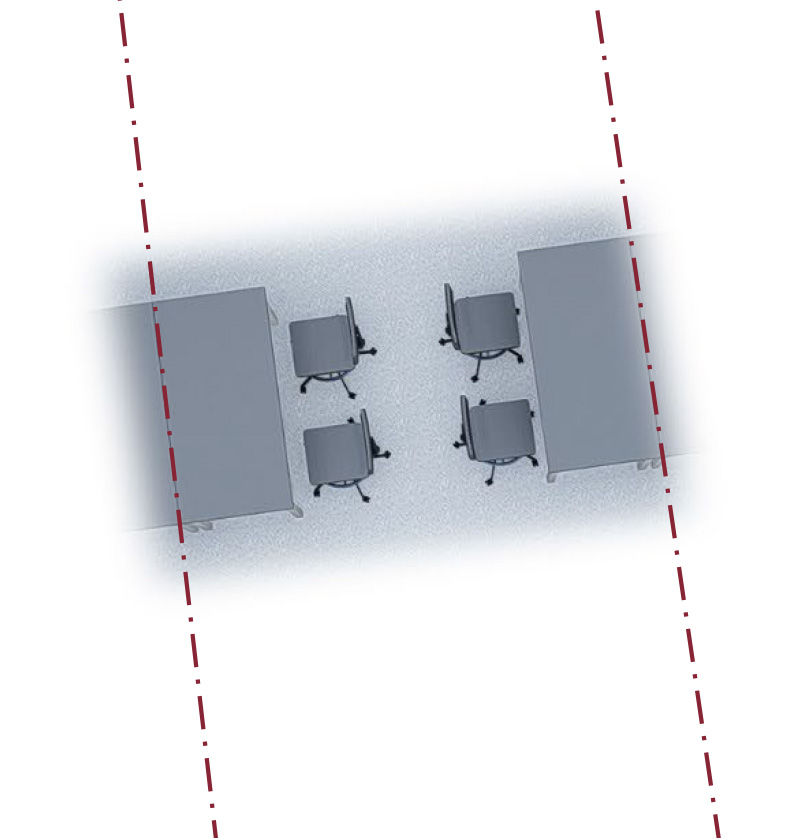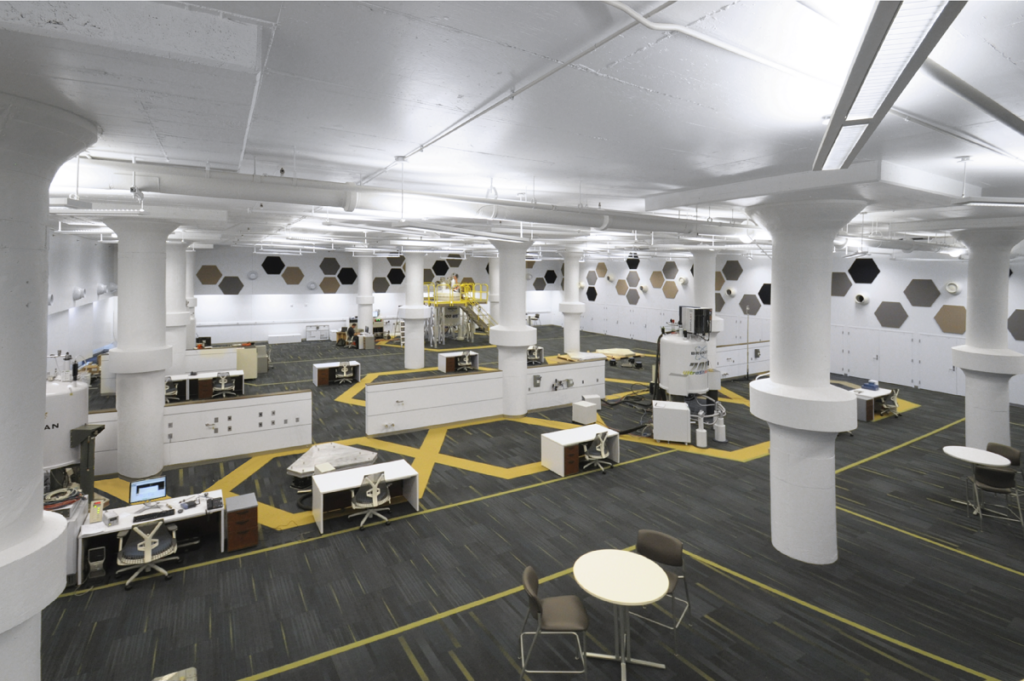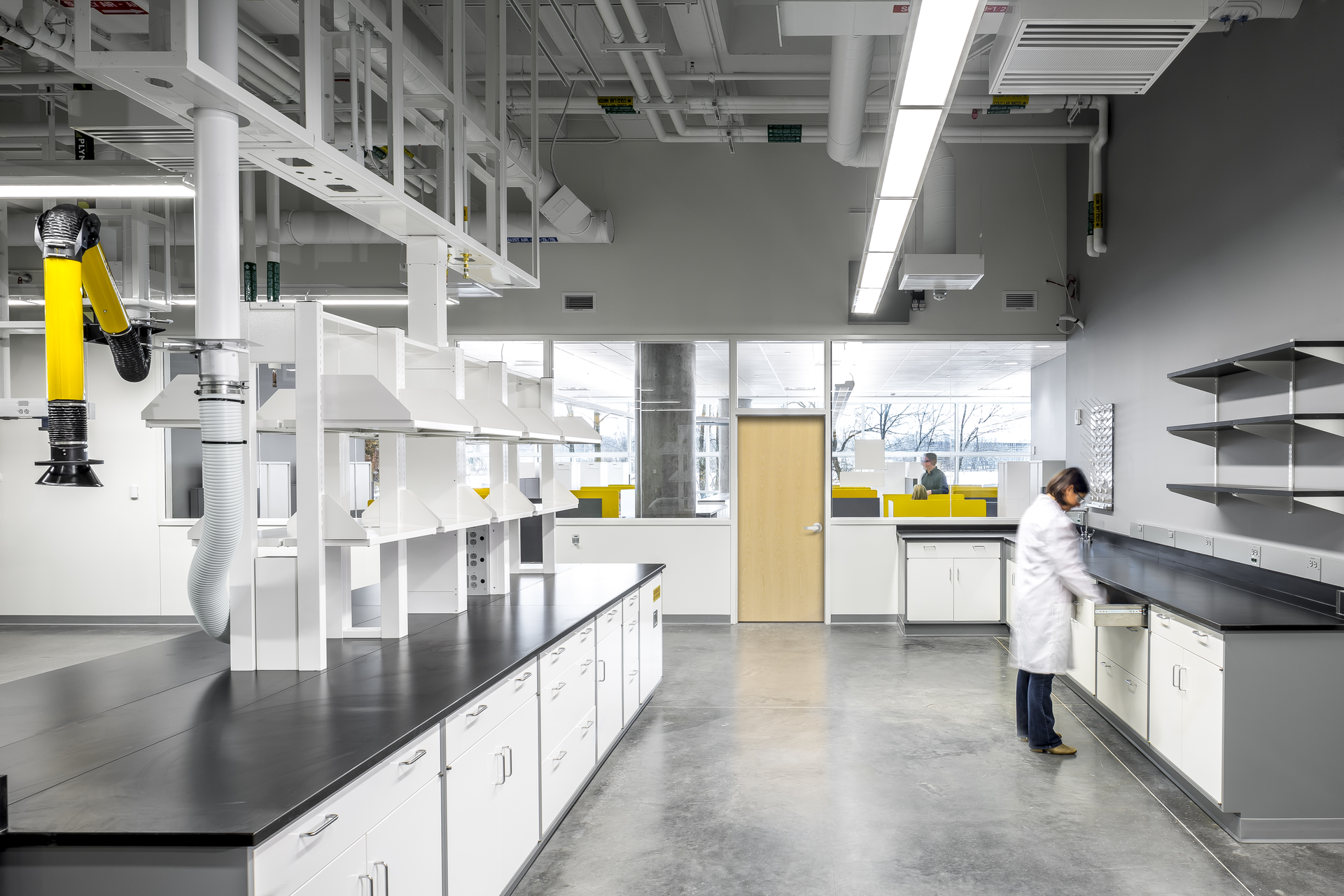Whether you’re a public institution, needing to justify your space and budgets down to the last square foot and dollar, or a private institution, wrestling with competing departmental demands and trying to make the most out of the facilities you have, the prospect of designing and creating new lab space can be fraught. However, one thing that our clients are often surprised to hear is that in many cases it’s possible to renovate an existing facility into an efficient, effective, state-of-the-art lab space without starting from scratch.
But what is really required to adapt an existing space into a lab? Some places certainly are better suited for conversion than others, so let’s look at some of the challenges and opportunities to consider, alongside some real-life examples from past BWBR projects.
5 Key Considerations for Renovation Success
While every project and structure are unique, there are at least five fundamental aspects of an existing building to bear in mind when considering whether renovation is a feasible and cost-effective option: Structure, Vibration, HVAC, Plumbing, and Code.
1. Structure
The basic structure of your existing building, including column spacing and floor-to-floor height, is fundamentally fixed, so understanding how that can limit lab planning (or not!) is an important first step. When considering new construction, we’d typically start with a floor-to-floor-height of at least 16’ to accommodate fume hoods, HVAC, plumbing systems, wiring, lighting, and other utilities. In a renovation, we’ve worked with floor-to-floor heights even lower than 12’-0” but of course more is better.
To consider whether the existing column spacing can be efficiently modified to accommodate the needs of your lab is to view it through the lens of a lab planning module. One module encompasses one work surface, an access aisle, and the next work surface — people working back-to-back (see diagram below.) Most lab planning modules are 10’ to 12’ wide and can be measured from the centerline of interior walls. Overlaying modules on top of existing floor plans can help illuminate the potential within the existing structure and, since modules are flexible by nature, they can accommodate varying arrangements including teaching labs or research labs.

2. Vibration
The floor vibration tolerance present in your existing structure is another key consideration and can vary depending on an overall steel vs concrete system, the thickness of the upper-level decks, thickness of slab on grade, and the spacing of columns. If your existing structure allows too much vibration, that can limit use of vibration-sensitive equipment that must operate within thin margins. It is possible to mitigate structural vibration to a point, so consider the needs of your lab within the context of your building — while installing sophisticated instruments or a cleanroom is not possible, biomedical research labs might be.
3. HVAC
The design, capacity, and space requirements of your current and planned HVAC systems are another important factor in a potential renovation. Code requirements around hazardous chemicals also come into play here and will vary based on your location and the type of lab you are creating. This could mean the need for a separate exhaust system with a high plume fan for ventilation. The structure of the roof and space on the roof will be needed in addition to ceiling and shaft space for this new system. If your building already has a lab exhaust system, it could be much easier to renovate an existing space into, say, a wet chemistry lab. Your mechanical needs will depend on your specific scenario, but there are often workarounds even if your setup isn’t ideal–your lab planner can guide you through the process and help you determine your options.
4. Plumbing
Encompassing everything from water supply to compressed air, natural gas, vacuum, and acid waste, your plumbing systems and capacity will be a crucial factor in any potential lab renovation. Depending on your current setup, this can be as simple as tapping into or expanding an existing system or as complex as retrofitting in completely new systems which can vary greatly in complexity based on lab functionality. Some systems like vacuum and pure water do not need a full building-wide system but can be tailored to a specific lab needs and have options to expand that local system to a regional system as you grow. Understanding the needs for these services will be imperative. For example, do researchers need vacuum to a depth of 2 mBar or 100 mBar? Do they need ASTM Type I pure (polished) water or just Type III? Most plumbing systems are scalable based on anticipated use quantities and diversity of the use at any given time.
5. Code
Safety is of the utmost importance in a lab setting, and as such these spaces are subject to various code requirements. Depending on your design intentions, you may have to meet new sprinkler and/or fire partition requirements and/or need to plan for separation of lab suites. Your lab planner can help describe regulations around the code’s maximum allowable quantities (MAQ) of chemicals and related appropriate design options–depending on the existing building’s construction type, the ability to create control areas may be limited on elevated floors. All of these can be accounted for in your design but should be reviewed early in the process, as this can severely impact costs, for example if you need an ”H” occupancy.
Renovations in Action
At the University of Minnesota, an existing underground structurally condemned concrete parking garage was able to be renovated into the University’s core facility for nuclear magnetic resonance (NMR) spectroscopy. In this example, the requirements for the magnet instruments were carefully studied to confirm how these sensitive pieces of equipment could successfully function in this renovated space, as well as get in and out of the space.
In the case of Cornell College, both a new build and a renovation together ended up being the perfect solution. At one time the vision for the project was to add on to the existing building, but studies showed the existing structural framework needed some upgrades, which would not be cost effective or able to achieve while keeping the building occupied. After the successful completion of the new Russell Science Center, which houses biology and chemistry, the West Science Hall was renovated to accommodate the physics and engineering departments. A maker/fabrication space and machine shop are connected to other spaces via an interior corridor window, and mechanical and electrical systems updates provide the infrastructure needed to support both project- and team-based work. Building the new spaces first allowed for another critical factor to consider in renovations- swing space. Most of the existing West Science Hall occupants were able to move into the new building, then renovation occurred on the existing building. Completing the new building first also helped spur a successful fundraising campaign and created general excitement on campus.
At Bethel University, a renovation made perfect sense in conjunction with an expansion to provide enhanced programming for lab and teaching spaces along with simple and clear circulation to improve wayfinding. A phased construction plan brought the project online while safeguarding the university’s cash flow and achieving strategic objectives. Phase 1 remodeled existing space for growing engineering programs and Phase 2 incorporated a three-story addition supporting fume hood-intensive teaching and research labs. In this example, it would have been very costly to put the fume hood-intensive chemistry spaces into the renovation due to existing shafts, head clearances, and code implications, so it quickly became clear that those spaces would be best fit into the addition. Utilizing renovation for the less infrastructure-intensive spaces allowed for an efficient use of space and budget.
Thinking Outside the New Build
When considering options for a new lab space, don’t rule out renovation without giving it a fair shake. By considering the realities and possibilities of your existing specs and mechanicals, you may find that the space you already have can work for you in a new way, and our experienced lab planners are here to help you every step along the way.








